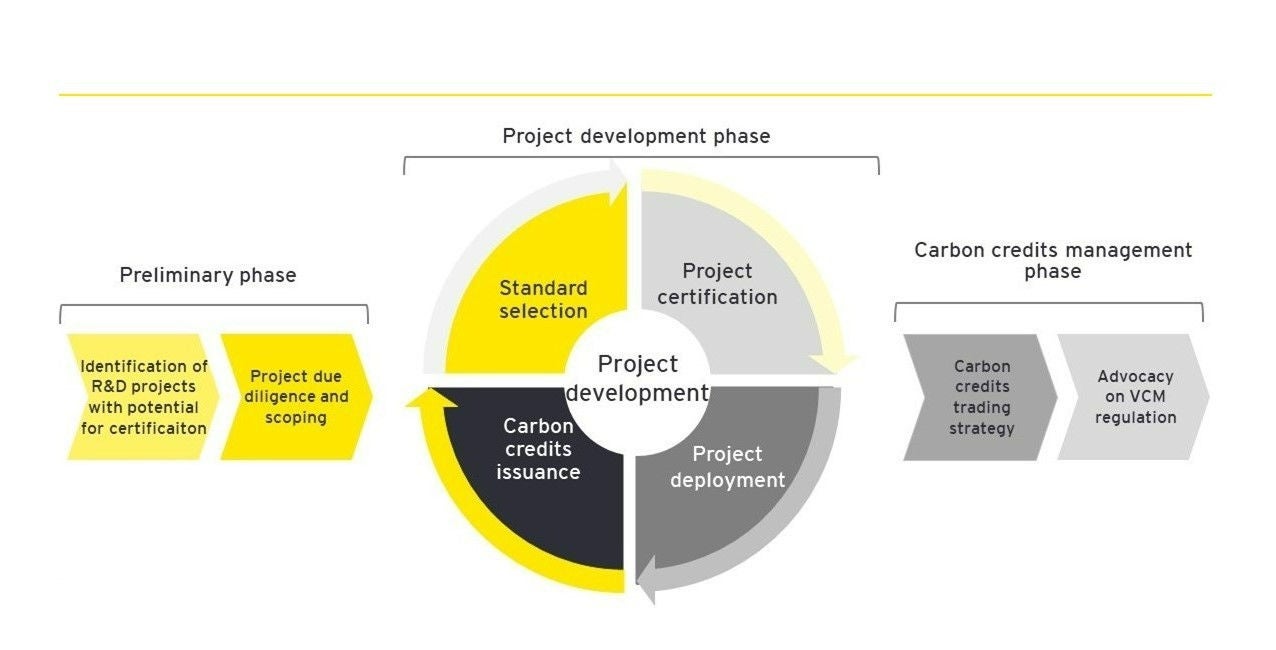EY refers to the global organization, and may refer to one or more, of the member firms of Ernst & Young Global Limited, each of which is a separate legal entity. Ernst & Young Global Limited, a UK company limited by guarantee, does not provide services to clients.

EY Center for Climate Policy (EY CCP) is an international expert hub that works with sovereigns helping them design climate policies, with corporates in need of understanding how these shifting policies will impact their business, and with developers looking to build high-quality offsetting projects.
With cross-cutting expertise from legal to economic and technical backgrounds, we are well versed in various carbon pricing models and can help facilitate and inform the design of domestic climate regime, starting from the conceptual phase through the implementation.
We offer a wide range of services tailored to the needs of public and private sector clients. In particular, we help advance thinking about climate policies through comparative analysis, by sharing best practices, lessons learned, cautionary tales and ideas worth transplanting from jurisdictions with existing carbon measures. We monitor and scrutinize new policy developments and assist in interpreting them and assessing the impact, both on business and on sovereigns. We also assist in understanding how various layers of climate legislation might overlap and intersect, for instance with regard to compliance and voluntary markets, or between domestic policies and the Paris Agreement framework.
- FOR GOVERNMENTS
- FOR CORPORATES
- FOR PROJECT DEVELOPERS
We help design climate policies
How to build an optimal carbon architecture?
When designing a legislative carbon framework the following questions arise:
- What are the advantages of regulating the voluntary carbon market?
- Which model for carbon pricing model to use (cap-and-trade, carbon tax, or both)?
- Which industries should be covered?
- How to set emissions baseline?
- What will be the envisioned evolution of the system?
- Whether and how to implement carbon border adjustment mechanism?
- How to align with schemes that have a potential to be interlinked?
- How to address governance issues?
- How to engage stakeholders?
- How to structure carbon price, and mechanisms for limiting price volatility for emissions trading regimes?
- How do you establish a legal definition of carbon credits, including their potential treatment as financial instruments ?
- How to create a domestic trading platform?
- How to ensure interplay between compliance and voluntary markets and market based mechanism under Article 6 of the Paris Agreement?
- How to embed climate regulations in the existing political / regulatory system?
The overarching goal is to design and implement a fully operational carbon policy ensuring real and measurable emission reductions accompanied by social, economic and environmental co-benefits.
We help to understand the impact of climate policies on business.
We help to build high quality offsetting projects.
EY supports Clients in selecting research & development projects with high carbon credits issuance potential. We also conduct the certification process on Client's behalf. After credits are issued, EY would support you in selecting an appropriate trading strategy.


We support clients in the build-out of net zero economy

We help to capture the potential offered by voluntary carbon markets

We help organization to fulfill obligations under Article 6 of the Paris Agreement

We support our clients in becoming an attractive location for sustainable investments

We help the companies to achieve competitive advantage in the world that is increasingly seeking carbon neutral products and services

We support the organizations in gaining credibility in discussions on an international climate diplomacy arena
Why climate policies?
Recent years have seen a growing trend among nations of the world towards setting up domestic climate policies. The reasons behind those actions vary between supporting the build out of net zero economy, collecting revenues to support decarbonization efforts, avoiding or mitigating payments under carbon border adjustment mechanism that the EU is implementing and other countries start contemplating, capturing the potential offered by voluntary carbon markets, benefitting from market based mechanisms under Article 6 of the Paris Agreement, becoming an attractive location for sustainable investments, achieving competitive advantage in the world that is increasingly seeking carbon neutral products and services, gaining credibility in discussions on an international climate diplomacy arena, ensuring that the social cost of carbon is internalized by the emitters for climate externalities.
Ultimately, we might witness the emergence of one global carbon pricing and legal framework, which is advocated by the WTO Director General Ngozi Okonjo-Iweala: “A shared global carbon-pricing framework would best provide certainty for businesses and predictability for developing countries,” Decarbonizing Supply Chains: Leaving No One Behind > World Economic Forum Annual Meeting | World Economic Forum (weforum.org). Until that happen, this fragmented policy landscape will continue to be challenging to navigate.
Our Team
Our Insights
Carbon credit rights under the Paris Agreement
Carbon markets are currently undergoing significant changes due to implementation of Article 6 of the Paris Agreement. Together with The Gold Standard Foundation our EY Center for Climate Policy led by Kasia Klaczynska Lewis analyzed how the introduction of international cooperation for emission reductions and offsetting impacts the rights to carbon credits.







